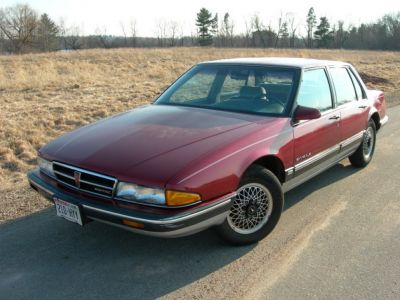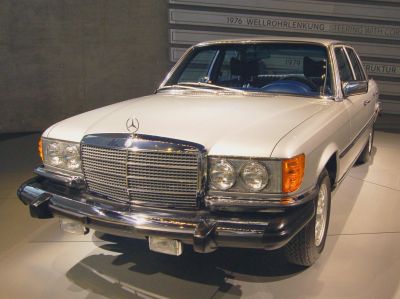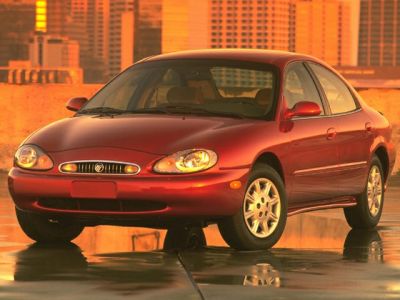 1979 Maserati Quattroporte III Dimensions, Size & Specs
1979 Maserati Quattroporte III Dimensions, Size & Specs
Measurements of the 1979 Maserati Quattroporte III, engineered for optimal performance and comfort
| Dimensions | |
|---|---|
| Length: | 4980 mm196.1 in16.3 ft |
| Width: | 1790 mm70.5 in5.9 ft |
| Height: | 1350 mm53.1 in4.4 ft |
| Trunk Capacity: | 600 liter21.2 cu ft |
| Weight Specifications | |
| Curb Weight: | 1900 kg4189 lbs |
| Maximal permitted Weight: | 2325 kg5126 lbs |
| Tire Specifications | |
| Rims Size: | 15-inch rims:
|
| Tire Size: |
|
The Maserati Quattroporte III, produced from 1978 to 1988, is a classic luxury sedan that blends Italian design with grand touring comfort. With a length of 4980 mm (196.1 inches), a width of 1790 mm (70.5 inches), and a height of 1350 mm (53.1 inches), this third generation Quattroporte offers a spacious yet sleek silhouette characteristic of late 1970s and 1980s luxury cars. Its curb weight is approximately 1900 kg (4189 lbs), with a maximum weight rating of 2325 kg (5125 lbs), reflecting its solid build and premium mechanical components.
The Quattroporte III features a luggage capacity of 600 liters (21.2 cubic feet), providing ample storage for long-distance travel or daily use. It rides on 15-inch rims sized 7.5J x 15, fitted with 215/70 R15 tires, balancing ride comfort with performance. This generation continued Maserati's focus on delivering a grand touring experience with refined handling and Italian engineering excellence.
Overall, the Maserati Quattroporte III stands out as an elegant and sizeable sedan from the late 70s and 80s, offering generous interior space and luggage room, combined with a commanding road presence. Its dimensions and weight contribute to its stable yet agile driving characteristics, making it a cherished classic for enthusiasts of Italian luxury sedans.
Discover the standout features that make the 1979 Maserati Quattroporte III a leader in its class
Have a question? Please check our knowledgebase first.
The Maserati Quattroporte III, produced between 1978 and 1988, is notable for its classic luxury sedan proportions. The car measures 4980 mm (196.1 inches) in length, offering a substantial presence on the road. Its width is 1790 mm (70.5 inches), providing ample shoulder room for passengers. The height is 1350 mm (53.1 inches), giving the vehicle a sleek but sufficiently tall profile for a comfortable cabin. These dimensions highlight the Quattroporte III’s blend of spaciousness and sporty design aesthetics typical of late-1970s luxury sedans.
The Maserati Quattroporte III weighs approximately 1900 kg (4189 lbs) when empty (curb weight). This weight is relatively substantial, reflecting its luxury sedan status equipped with robust V8 engines and high-quality materials. The heavier weight contributes to a stable and planted ride, enhancing comfort and driving confidence at higher speeds, though it can moderately reduce fuel efficiency compared to lighter cars. The trade-off favors luxury and road presence over economy, which is common for a high-performance sedan from the late 1970s and 1980s.
The maximum weight rating, or gross vehicle weight, for the Maserati Quattroporte III is 2325 kg (5127 lbs). This figure represents the maximum legal operating weight including the car itself, passengers, cargo, and fuel. Given the curb weight of 1900 kg (4189 lbs), the Quattroporte III supports an additional 425 kg (938 lbs) of load, which implies it can comfortably carry four to five passengers along with their belongings without compromising performance or safety. This capacity aligns with its role as a luxury sedan designed for spacious and comfortable long-distance travel.
Typical residential garages measure about 2400 mm (7.9 feet) wide and 4800 mm (15.7 feet) deep. The Maserati Quattroporte III, with a 4980 mm (196.1 inches) length, slightly exceeds standard garage depth by approximately 180 mm (7 inches). However, many garages accommodate minor extensions, and the width of 1790 mm (70.5 inches) fits comfortably within a standard garage width. Owners might need to maneuver carefully when parking but overall, the Quattroporte III can fit into most standard residential garages, especially if the garage is slightly larger or personally adapted.
The Maserati Quattroporte III offers a luggage space capacity of approximately 600 liters (21.2 cubic feet). For its time (late 1970s and 1980s), this was a generous cargo volume, especially for a luxury sedan with a strong performance focus. Compared to competitors like the Mercedes-Benz S-Class or BMW 7 Series of the same era, the Quattroporte’s luggage capacity was competitive, providing ample space for long-distance travel luggage, enhancing its appeal as both a performance and practical luxury car.
The Maserati Quattroporte III comes equipped with rims sized 7.5J x 15 and tire sizes of 215/70 R15. These relatively tall sidewall tires (70 aspect ratio) provide a balance between ride comfort and road handling. Larger sidewalls tend to absorb road imperfections better, leading to a smoother ride, which is important for a luxury sedan. Meanwhile, the width of 215 mm on the tires offers sufficient grip for sporty driving dynamics without compromising comfort excessively, reflecting the car’s dual nature as a performance-oriented yet comfortable luxury sedan.
The Maserati Quattroporte III is larger and heavier than its predecessor, the Quattroporte II, which was a more limited production luxury sedan during the early 1970s. The third generation measures 4980 mm (196.1 inches) in length and weighs about 1900 kg (4189 lbs), making it bigger and heavier than the II generation, which was about 4760 mm (187.4 inches) long with a lower curb weight. The increased size and weight in the III generation translated into more interior space and improved ride comfort, but also demanded more robust powertrains and updated suspension to maintain performance.
When compared to contemporaries such as the Mercedes-Benz W126 S-Class and BMW E23 7 Series, the Maserati Quattroporte III holds its own with a length of 4980 mm (196.1 inches), slightly longer than many rivals. Its width of 1790 mm (70.5 inches) and height of 1350 mm (53.1 inches) align closely with the European full-size sedan category. While many competitors emphasized advanced technology and refinement, the Quattroporte III balanced Italian flair, sporty V8 engines, and traditional luxury. Its luggage capacity and interior space were competitive, though some rivals offered more advanced electronic systems as standard.
While exact interior measurements for the Maserati Quattroporte III are less commonly cited, its overall external dimensions (4980 mm L x 1790 mm W x 1350 mm H) and design emphasize spaciousness for four to five passengers. The long wheelbase and wide body allowed for generous legroom and shoulder room, enhancing passenger comfort on long journeys. The cabin was designed to combine luxury with a driver-focused experience, ensuring both front and rear occupants enjoyed a refined, comfortable environment consistent with a flagship luxury sedan of the late '70s and '80s.
The Maserati Quattroporte III stood out with its classic Italian styling crafted by Giorgetto Giugiaro, combining elegance with sporty lines. Noteworthy engineering highlights included its powerful V8 engines, rear-wheel drive layout, and a suspension setup tuned for both performance and comfort. Unlike many competitors that increasingly standardized electronic driver aids, the Quattroporte III emphasized mechanical precision and driver engagement. Additionally, its relatively large luggage capacity and broad interior space underscored its versatility as both a cruiser and a performance sedan, setting it apart in the luxury saloon segment of its era.
Discover similar sized cars.

| Production: | 1986-1991 |
|---|---|
| Model Year: | 1987 |
| Length: | 5040 mm198.4 in |
| Width: | 1855 mm73.0 in |
| Height: | 1385 mm54.5 in |

| Production: | 1972-1980 |
|---|---|
| Model Year: | 1974 |
| Length: | 5060 mm199.2 in |
| Width: | 1870 mm73.6 in |
| Height: | 1410-1430 mm55.5-56.3 in |

| Production: | 1995-1999 |
|---|---|
| Model Year: | 1996 |
| Length: | 5070 mm199.6 in |
| Width: | 1850 mm72.8 in |
| Height: | 1410 mm55.5 in |
